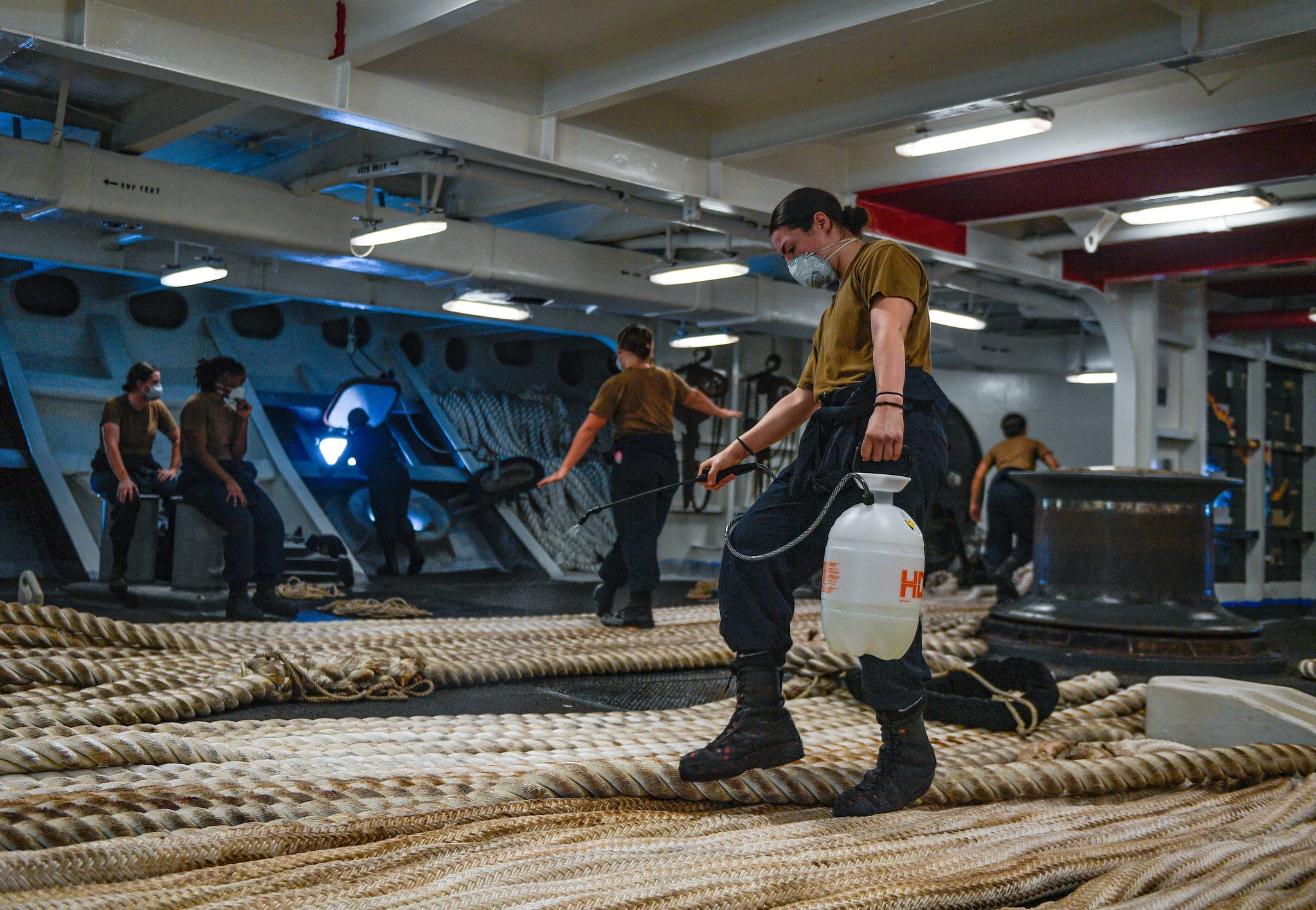Face coverings may be annoying and fog up your glasses, and perhaps your ship has not yet received any of the 2.25 million masks Big Navy says it had shipped to the fleet as of last month.
But a study released Tuesday suggests such measures can keep you safer at sea.
A test group of sailors assigned to the stricken aircraft carrier Theodore Roosevelt reported lower infection rates among those who wore face masks, avoided common areas when possible and practiced social distancing, according to the U.S. Centers for Disease Control and Prevention study released Tuesday.
Also Tuesday, Navy officials for the first time confirmed that 1,273 sailors out of the approximately 5,000 members of the carrier — more than 25 percent — tested positive for the virus.
The Navy and the CDC tested 382 volunteer TR sailors this spring in Guam after an outbreak sidelined the carrier in the midst of a deployment.
TR has since left Guam and resumed its deployment.
The CDC study also found one in five sailors who tested positive for COVID-19 antibodies never showed any symptoms.
The question of whether people infected with the virus can pass it to others while not exhibiting any symptoms remains a pressing question across the globe, even more so within the close confines of a ship, where distancing and other mitigation steps are not always possible.
Because sailors can have the virus and potentially spread it without even knowing it, personal measures like a mask and other best practices are that much more vital, Navy officials told reporters Tuesday.
“We see--in the reporting, that both the use of face coverings in common areas and observing social distancing--a reduction in infection rate,” Capt. Robert Hawkins, the head of the Navy and Marine Corps Public Health Center, said. “That’s pretty exciting.”
The study also offers for the first time insight into how the virus manifests in a population of young, healthy Americans, while providing more data into the big question of whether someone can contract the virus again.
The CDC found that most of the TR sailors who tested positive for antibodies in the study reported mild symptoms.
A loss of taste or smell was the symptom most associated with current or previous infection, with other commonly reported symptoms including body aches, fever and chills.
RELATED

Infection rates were also higher among participants who reported contact with a shipmate known to have had COVID-19.
Sailors who reported sharing berthing with a shipmate that tested positive also had higher rates of infection, according to the CDC.
About 60 percent of the 382 sailors tested were positive for COVID-19 antibodies, which show that someone has already contracted the virus, according to the study.
Among that antibody-positive group, 60 percent had the kind of antibodies that protect someone from getting the virus again, the CDC found.
While the medical world doesn’t yet know how long such antibodies might protect someone from reinfection, eight sailors still had these so-called neutralizing antibodies more than 40 days after they first came down with symptoms, according to the report.
“We’re going to look at this further, but this finding may give us an early glimpse into actual immune protection against COVID-19 in young adults having intense viral exposure,” the study’s lead investigator, the CDC’s Dr. Daniel Payne, told reporters Tuesday. “They could be indicators of some degree of immunity.”
While officials can’t yet say for certain that people with antibodies are immune, or for how long, he called the TR results “an encouraging indicator.”
“These are all important findings, especially because we are looking at young, relatively healthy Americans,” Payne said. “This is basically a gap in our knowledge base to date.”
Geoff is the managing editor of Military Times, but he still loves writing stories. He covered Iraq and Afghanistan extensively and was a reporter at the Chicago Tribune. He welcomes any and all kinds of tips at geoffz@militarytimes.com.





